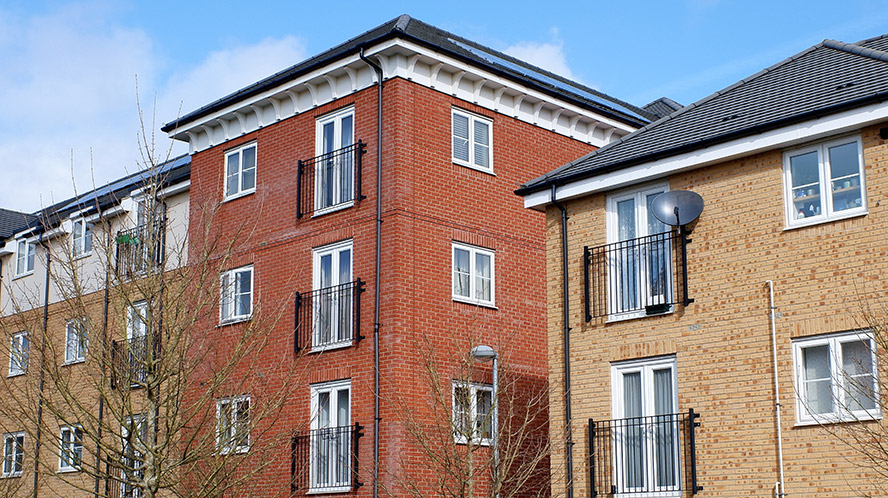Investing in property is not a decision to take lightly.
Yes, it can be a means of making money. But it’s far from easy.
There’s no guarantee that it will be possible to arrange continuous letting of the property.
There’s also no guarantee that the rental income will be sufficient to meet the cost of the mortgage.
So, it’s important to go into it with your eyes wide open.
To protect your finances, we would always recommend speaking to a mortgage adviser and an accountant to discuss your financial situation and better understand all your options.

Buy-to-let is a medium or long-term investment.
Before investing any capital, ask yourself: Can I afford to tie up my money for a specific period of time?
The terms for buy-to-let mortgages are constantly changing. And keeping up to speed with these changes can be difficult.
For instance, higher and lower rate taxpayers are often treated differently.
A five-year fixed-rate mortgage might also allow you to access a bigger mortgage compared to a two-year fixed deal.
In our experience, buy-to-let mortgage rates vary depending on several factors:
Before investing any capital, we would recommend seeking advice from a qualified mortgage adviser to discuss all of the buy-to-let mortgage options available.
This is the first thing any prospective landlord needs to decide.
Interest-only
Popular with buy-to-let investors, this will mean you only pay back the interest and not the capital borrowed. Choosing an interest-only mortgage is a good option if you plan to sell the property at the end of the term. If you do sell the property, you’ll repay the outstanding mortgage amount and any tax due on the profit made via Capital Gains Tax.
An interest-only mortgage means your monthly mortgage payments are lower, as you only need to pay back the interest and not the capital. This could ensure you have more disposable money available.
Repayment
During the term of this mortgage, you will pay off the interest and capital balance at the same time. By the time the mortgage term comes to an end, you will have repaid the entire mortgage, so long as you do not change this date.
Just as with the standard mortgage market, there are many different types of buy-to-let mortgages to choose from.
Fixed rate mortgage
No matter what happens to interest rates, your mortgage payments are fixed and will stay the same for the length of your deal.
This brings certainty on a month-to-month basis, whether you choose a deal which lasts for two, three, five years or ten years etc.
In effect, this type of mortgage acts as an insurance policy against potential interest rate rises. As a result, they tend to a higher rate as you are pay a bit more for reassurance.
Variable mortgages
Variable rate mortgages fluctuate, depending on the interest rate set by the Bank of England and the type of variable product you choose.
There are several types to choose from, but the following are the most recognised.
To discuss all the different options in detail, get in touch and speak to a mortgage adviser.
Standard Variable Rate (SVR) mortgage
Standard Variable Rate (SVR) mortgages closely follow the Bank of England rate but not exactly. If the rate drops to 0.15%, your SVR might only drop to 0.10%. But should the Bank rate go up, your mortgage will often increase by the full amount. You usually move onto an SVR once your fixed-rate term comes to an end.
Tracker mortgage
Tracker mortgages will follow and track the Bank of England rate exactly. So, whatever interest rate the Bank sets, this is the amount you’ll pay on your mortgage.
Trackers are common for a few years and then you usually drop onto an SVR after a time-limited period comes to an end. Some tracker mortgages do exist which follow the Libor rate, which is a rate set by the banks themselves.
Discount Rate mortgage
With a discount rate mortgage, you benefit from a reduction compared to the Standard Variable Rate (SVR) for a set period. It could be two, three or five years. Or, depending on the deal, it could be for the entire term of the mortgage.
Searching the buy-to-let mortgage market can be time consuming.
With our help, you can gain access to thousands of deals, including exclusive offers and lenders that are not on the high street.
We understand that no two buy-to-let mortgages are the same. Tap into our knowledge and experience and we’ll help you compare the cost of the property against the rent you’re likely to receive.
When you’re ready to apply for a mortgage, call our specialist advisers and we’ll run through your finances so you can be sure you’re getting the best deal.
DISCLAIMER:
There is no guarantee that it will be possible to arrange continuous letting of the property nor that rental income will be sufficient to meet the cost of the mortgage.
Your property may be repossessed if you do not keep up repayments on your mortgage.
There may be a fee for mortgage advice. The actual amount you pay will depend upon your circumstances. The fee is up to 1% but a typical fee is 0.3% of the amount borrowed.
Get tried & trusted mortgage advice - call 0800 915 5409 & chat to our experts!